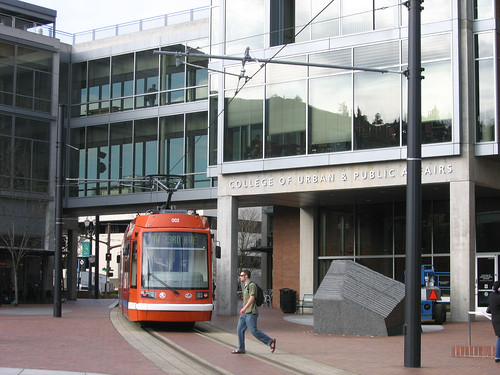Double design failure: Norfolk State University and light rail
First, Norfolk State University made the Hampton Roads Transit system move their proposed light rail station off the campus, out of a perceived danger to students, to a site near the campus but across a 6-lane road.
From "NSU officials say Tide station poses risk for students" in the Norfolk Virginian-Pilot:
Because of their safety concerns for students on campus, Norfolk State University officials forced a $7 million relocation of the light-rail station across Brambleton Avenue, to move it away from the school.
Now that station poses a different kind of safety issue - for students trying to get onto campus.
Students, who ride The Tide for free, often dash across six lanes of Brambleton traffic to get from the rail station to classes, instead of walking an extra block or two to use a controlled crosswalk. They cross in the middle of a busy block, between the Interstate 264 exit ramp and the Park Avenue intersection, which is traveled by nearly 50,000 vehicles a day.
"It's really dangerous," said Regina V.K. Williams, NSU's interim vice president for finance and administration and the city manager when Norfolk agreed to build the station across Brambleton. "We want people using light rail, but we want them to be safe."
Labels: public safety, public space management, transportation planning, urban design/placemaking




0 Comments:
Post a Comment
<< Home